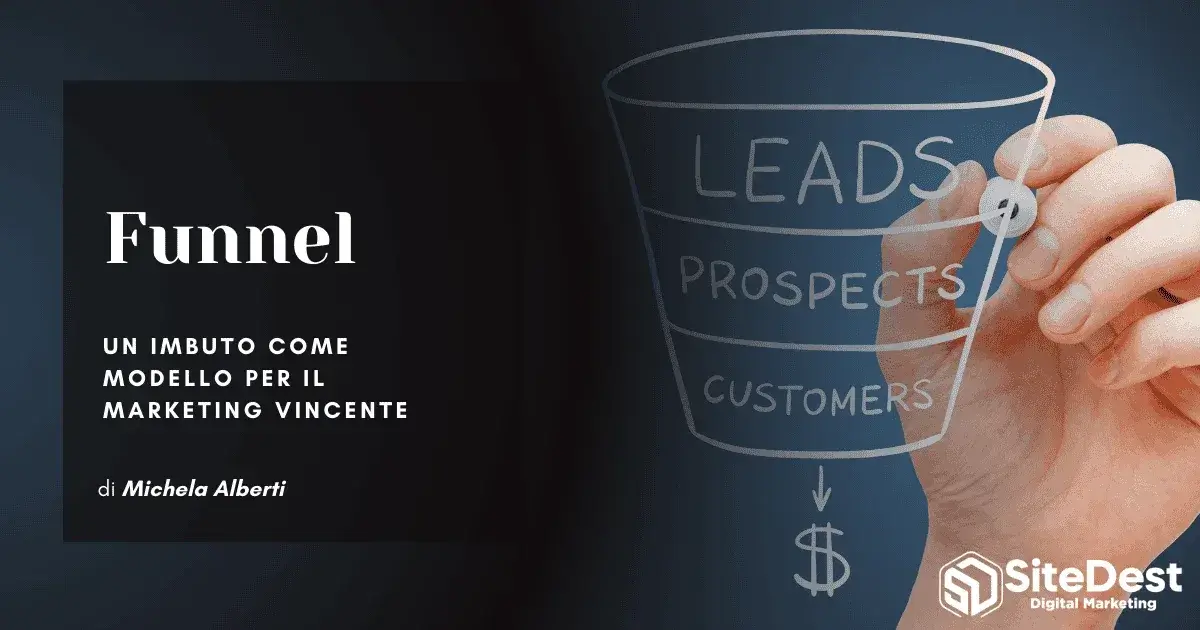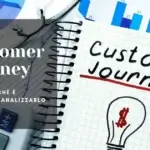You may have heard of the funnel, the strategic model that guides the customer through the brand relationship to purchase. Let's take a closer look at what it is and why it is essential to create the perfect funnel for optimal UX.
What is the funnel?
Funnel in Italian means funnel and is a word that is heard more and more often now but whose true meaning is not always clear.
In short, it is the form that the path of the potential customer takes from the first approaches with the brand, to becoming an actual customer first and, later, if the user experience turned out to be satisfactoryhe would even become testimonial, or brand ambassador.
Imagine a funnel: its peculiar characteristic is that it takes in a large amount of liquid, for example, until it shrinks further and further down and allows little to pass through, right?
Funnel marketing behaves in the same way, with the difference that the liquid is the users; the process involves involving as many users as possible and narrowing the field through targeted strategies to reach only those really interested in buying.
Customer journey touchpoints
A well-done customer journey is composed of the touchpoint defined to represent the stages of interaction between user and brand and are awareness, consideration, intention, decision and loyalty.
If you want more information about the customer journey and its usefulness can be found in thearticle dedicated.
In order for the customer journey to offer the best user experience with the brand, the strategy must be tailored to the context, brand and target users and integrate the touchpoints into the three levels of the marketing funnel.
What are the sales funnel levels?
You will no doubt have heard of TOFU, MOFU and BOFU. These are the three main areas that make up the funnels. Let us look at them together in detail:
- TOFU (Top of the Funnel or Upper Funnel)
The part that is higher up in the funnel, the broader part that aims to bring the brand into contact with the greater number of users. We are therefore in the first part of the acquisition process.
- MOFU (Middle of the Funnel)
The central part of the funnel which aims to interacting with users to ensure that they remain active for as long as possible.
- BOFU (Bottom of the Lower Funnel)
The lower part in the funnel, the final, narrower part, which is intended to converting customers.
There are those who, at the end of the funnel, insert a further level that we can refer to as Loyality and which is indispensable after the customer has been converted. Loyalty, in fact, makes it possible to maintain contact with the customer in order to satisfy future needs, to propose new services and to ensure that he/she always feels supported even after the purchase.
This customer care drives word of mouth and makes the user become a natural advertising channel without the brand doing anything.
Why the funnel marketing model is useful
Cass R. Sustein (jurist and scholar of the rationality and irrationality of human economic behaviour) and Richard Thaler (behavioural economist), in their research, theorised an approach using the so-called 'goads', i.e. those aspects that, in thearchitecture of choicesguide users' behaviour so that they are pointed in the right directionwithout depriving them of any possibilities.
In the field of marketing, these goads, in essence, are those strategies, such as funnel marketing and customer journey, aimed at accompany the user on their experiential journey of interaction with the brand so that he can be converted, can satisfy his needs and can feel satisfied with his choice.
The benefits of funnel marketing are two-way, which means that they not only affect the brand, but also the customer. Let us see together what they are.
Benefits of the funnel for the brand
Thanks to the funnel strategy the brand can increase and improve touchpoints with users through the use of email, landing page e optimised conversion rates.
By improving the way it interacts with the user, the brand can get to know the user's needs more closely, so that it can respond more comprehensively to the user's needs and solve the problems they face.
In addition to this, the funnel allows nurturing user curiosity to stimulate its desire for the brand's products or services.
Finally, the use of the best structured funnels for marketing automation allows you to design your marketing campaigns to automatically convert customers so you don't have to deal with them yourself.
Automatism is synonymous with enormous time savings you can devote to running your business and the creation of new projects.
Benefits of the funnel for users?
Imagine that your user, a coeliac, is driving his car in an unfamiliar mountain village and starts to get hungry. He will certainly need to find a restaurant that can meet his needs; not just any restaurant, but one that has certain characteristics.
Road signs are not enough: they can point him to a generic restaurant, but the kitchen may not be equipped for a coeliac.
Without an effective navigator or search engine, it will be very difficult for him to satisfy his need in a short time and he will run the risk of wandering through the streets of the unknown country, not choosing any restaurant and remaining hungry or resorting to any restaurant with the risk of consequences for his health.
Here the funnel could be the solution to your problemready to direct him towards the best brand to meet his needs.
A lost user is a potential customer who will never make a wise choice and will perform actions that may make him experience something less than pleasant, before, during and after.
Thanks a appropriate and targeted user experience you can direct him to the best product that will fully satisfy his needs in the shortest time, solve his problems and, above all, give him a valuable experience.
Valuable experience is synonymous not only with conversion, but also and above all with loyalty. A customer who is satisfied with his purchase will spontaneously tend to involve acquaintances and friends who may have the same needs as him or who, as yet, they do not know they have.

